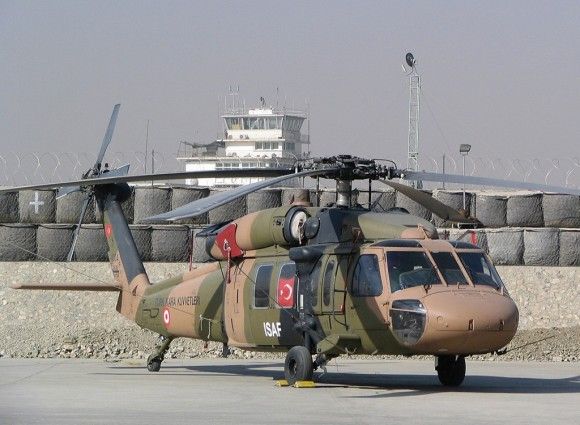“Useless” Saxon Vehicles Surprisingly Useful In Ukraine. Kiev Benefits From The “Cost-Effect” Ratio
Procurement of the decommissioned British AT-105 Saxon armoured vehicles by Kiev initially was seen as a surprise, and then it was vividly criticized. The carriers, referred to as junk, had an opinion of being useless, weakly protected by armour or even unstable (prone to tip over). Meanwhile, the Ukrainian experiences gathered during the operations in the ATO zone may be surprising – the old, inexpensive platform turned out to be, in the specific political and military conditions present, very effective, especially within the scope of its cost-effectiveness.
75 AT-105 Saxon vehicles were purchased by Ukraine at a cost of USD 38 thousand per vehicle, and if one included the shipping cost, cost of a single platform is defined as USD 51 thousand (some sources suggested that the price was expressed in British Pounds). Without any doubts, the low cost was one of the key selection criteria taken into consideration by the government in Kiev. On the other hand, realistically speaking, it was also important that the vehicles in question were acquired via a private entity, and with an immediate delivery arrangement in place. With limited monetary assets at their disposal, the Ukrainians have procured the “battlefield taxis”, carriers which, within the British Army, were to replace the non-armoured trucks utilized in the role of carrying the infantry elements from point A to point B.
The British themselves even considered selling the obsolete armament to the Ukrainians to be immoral. General Richard Dannatt, who is the ex-commander in chief of the British Army, claimed that the vehicles are considered to be almost completely useless semi-armoured trucks, which shall not be delivered to any front-line.
“Useless” Carrier in Ukraine
In February 2015 the Ukrainians received the initial batch of the Saxon vehicles (20 platforms), which underwent a ballistic test programme. The results of exposing the Saxons to small-arms fire were satisfactory to the Ukrainians. It was stressed that the armour of the body of the carriers was relatively good, and the level of safety was enhanced by “safe” fuel tanks and mine-protection measures. During the test programme, it also turned out that the British vehicles also are characterized by quite good off-road capabilities.
In March 2015, the initial examples of the Saxon vehicle have been delivered to the tactical units. The AT-105 platforms were being provided mainly to the airborne elements. We know that in March, out of those 20 examples, 3 AT-105 platforms were transferred to the Ukrainian 79th Airmobile Brigade, with an intention to carry out a relevant test programme. At the same time, the non-armoured carriers have received relevant weaponry and communications systems. In April, the Ukroboronprom company has presented an armed variant of the AT-105 vehicle, fitted with a .50-cal DShKM heavy machine gun and two KT-7.62 (.30) machine guns.
In June, the second batch of the Saxon vehicles was delivered (consisting of 55 examples). This time, the vehicles were tasked with a new job – 20 Saxons were to be tailored to fit the MEDEVAC role, while the remaining 35 carriers were to be customized to a command-staff variant (KShM). The initial AT-105 WEM were presented to the President Poroshenko in July. The MEDEVAC vehicles were also missing (and probably still are missing) from the inventory utilized by the Ukrainians, and the injured and wounded soldiers were being transported from the battlefield with the use of random vehicles, including some ordinary trucks.
Saxon vehicles, in a wide variety of versions, were firstly delivered to the elite tactical units (25th Airborne Brigade, 79th, 81st and 95th Airmobile Brigades and 36th Naval Infantry Brigade (which is also considered to be a coastal defence unit). Some examples of the vehicles were also received by other units, including the Kharkiv based military police elements.
Saxon Surprises
At the first glance, the AT-105 seems to be an obsolete vehicle. Nonetheless, the Ukrainian soldiers using the platform cannot speak of it highly enough. One of the soldiers of the Airmobile Brigade appreciated the Saxon’s good performance on the road and in an off-road context, since the performance characteristics of the British vehicle, in certain situations, exceed those of the contemporary BTR vehicles used by the Ukrainians. The interviewed soldier claimed that AT-105, in off-road conditions, turned out to have better mobility than the BTR-4 platform. The second example shows that AT-105 4x4 vehicle has all-terrain capabilities which are no worse than those of the track-chassis platforms (2S3 Akatsiya), while on hardened surfaces the vehicle is even more mobile. This type of comparisons takes place because of the fact that the aforementioned airmobile units use a quite varied and surprising inventory.
When it comes to the lack of stability of the carrier, the soldier does not confirm the supposed tendency of the vehicle to tip over, which suggests that the incident during the course of which Saxon landed in a road-side ditch was a result of the driver’s error, not the vehicle’s design. It is worth to mention the fact that in March 2015, on the road between Kiev and Kharkiv, an accident involving two Saxons took place – the first AT-105 fell into a ditch and tipped over, while the second one crashed into a road barrier. The aforementioned accident marked a beginning of the “unlucky” incidents involving the Saxon vehicles, since the Ukrainian Armed Forces began to use them.
The carrier also exhibited its resistance to faults, covering thousands of kilometres and accumulating quite impressive mileage. There are also some obvious problems pertaining to the spare parts, but in comparison with the maintenance and logistical issues faced by the Ukrainian Army, the aforementioned concerns seem to be quite minor. Saxon, obviously, also exhibited its disadvantages which have been discovered during its service in Ukraine. When it is on the move, the ride is very rough, it is easy to injure your head – hence the English warning notes present in the cabin, instructing the passengers to wear their helmets and fasten their seatbelts. Small fuel tank is also a relevant problem – 105 litres is a very modest quantity, with fuel consumption at the level of 33-35 litres per 100 kilometres. Moreover, the Saxon’s body is quite high, which may also be quite disadvantageous, in certain battlefield conditions.
In General, the vehicle, considering its limited price, has turned out to be quite effective in the conditions present during the Ukrainian crisis. It is also imperative to remember than even though on paper, the capacity remaining at hand of the Ukrainian defence industry when it comes to the armoured platforms is quite significant, the reality is not so bright – technological capacities have been lost and quality has been decreased, which led to manufacturing- and maintenance-related faults and defects. The Ukrainians, during the most intense period of the crisis, have hence acquired 75 carriers meeting the required ballistic standards. They were satisfied with the fact that the side armour of the hull was able to stop a B-32 7.62×54R armour piercing round, shot at the vehicle from the SVD sniper rifle at a distance of 20 meters.
Procurement of the Saxon vehicle shall be assessed, within the current situation and in the context of the Donbas fights, as a “beggars can't be choosers” situation. The Ukrainian forces were in need of acquiring a light 4×4 armoured vehicle, for the purpose of carrying the troops, which at the same time would be cheap and available immediately. The criticized Saxon platform filled in the niche, being effective in everyday use – its lifetime in the Armed Forces of Ukraine is not expected to be long, since it is inevitable that spare parts supply is going to be highly problematic.
When assessing the Saxon vehicles, one should note that they were not going to replace the BTRs or BMPs – this was not the main goal of acquisition. The newly procured vehicles were to become a new armoured means of transport, for which the mine-resistance also bears some significant relevance. It is worth to note that Saxon is able to carry up to 8 soldiers in the troop compartment (2+8, 2+10 usually), however the Ukrainian sources suggest that only 6 troops are able to comfortably squeeze in.
Yuriy Biryukov, Ukrainian volunteer and adviser for President Poroshenko also noted another important issue – in the light of the embargo-like conditions, Saxon was the best solution available, that could have been acquired by the Ukrainians at the time, at an affordable price.
Not only is the transaction a proof of the tough situation faced by the Ukrainians, but it also shows that the domestic industry is incapable of mass manufacturing light combat vehicles, such as the light Dozor-B 4x4 platform.
Additionally, one more specialized variant of the Saxon vehicle shall be mentioned, since some of the carriers have been adopted to act as a mobile drone control stations for the quadcopters.
Marcin Gawęda




